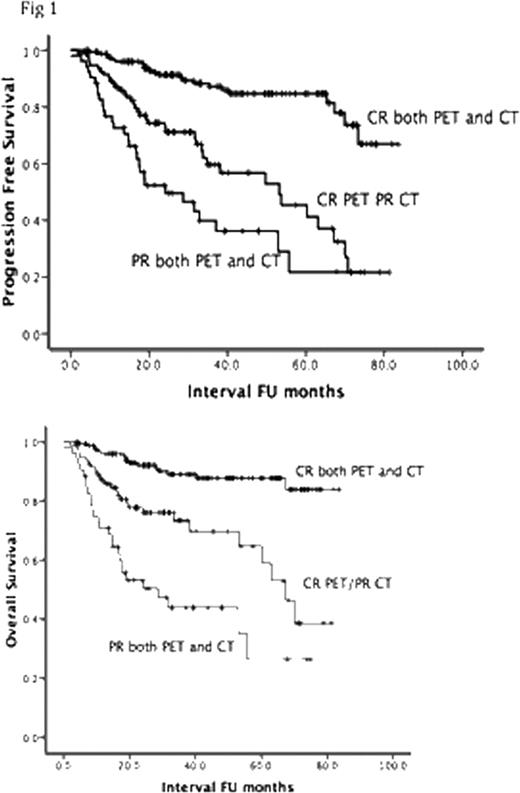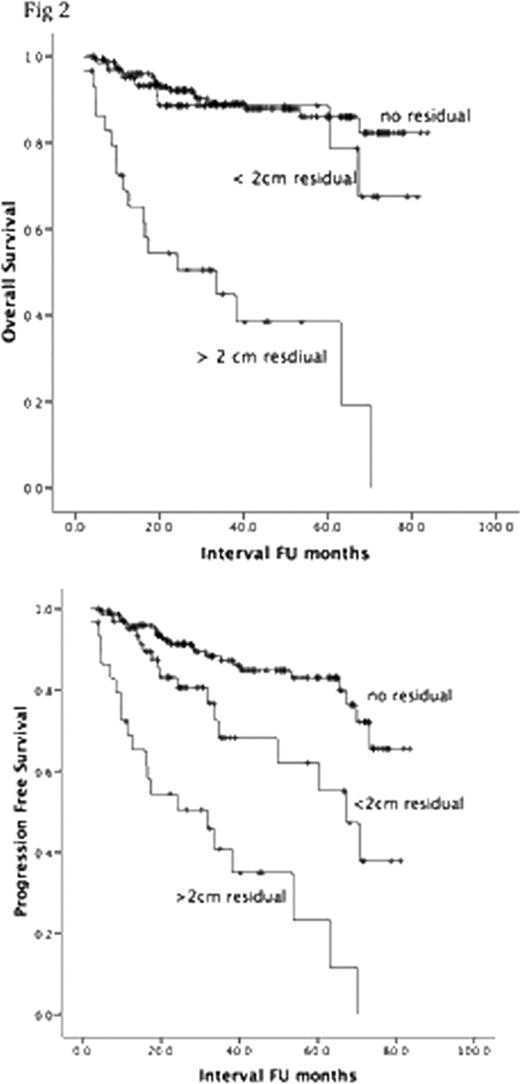Abstract
Abstract 2695
To evaluate potential differences in overall survival (OS) and progression-free survival (PFS) according to PET and CT disease status at completion of chemotherapy for patients with Diffuse Large B-cell lymphoma.
Subjects were 303 patients with histologically confirmed DLBCL treated between January 2001 and December 2007; no patient received radiation therapy. We evaluated: age, sex, Ann Arbor stage, bulky disease, International Prognostic Index score, Ki-67 expression, PET standardized uptake values (SUVs), disease status after chemotherapy and at last follow-up.
Median age was 61 years; 149 men; 81 (27%) had stage I-II, 242 (73%) stage III-IV. A total of 248 patients (82%) completed 6–8 cycles of doxorubicin-based therapy. On multivariate analysis, both OS and PFS were significantly influenced by: the presence of PET negative residual mass on CT at completion of therapy (P < 0.001 for OS and P < 0.001 for PFS) (Figure 1); number of cycles and type of chemotherapy (P < 0.001 for OS and P < 0.001 for PFS); Combined presence (p=0.01 for OS and P=0.003 for PFS) of high Ki 67, high PET SUV, and bulky disease; and IPI score (P = 0.001 for OS and P < 0.001 for PFS). Same factors remained significant when replacing response to therapy with size of the residual mass on CT (Figure 2), or number of residual sites (Figure 3) (p<0.0001 OS and p<0.0001 PFS).
Presence of a residual mass on CT at the completion of chemotherapy has both prognostic and predictive value in patients with DLBCL. These patients should be considered for biopsy and further consolidative therapy.
No relevant conflicts of interest to declare.
Author notes
Asterisk with author names denotes non-ASH members.




This feature is available to Subscribers Only
Sign In or Create an Account Close Modal